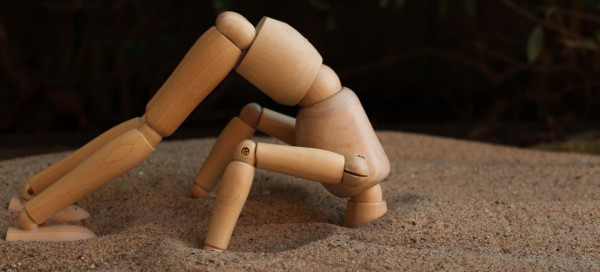
Mindfulness innebär att uppmärksamma på syftet, i nuet, med kvaliteter som medkänsla, nyfikenhet och acceptans.
Acceptans är en av de mest hjälpsamma attityder i mindfulness. Acceptans innebär att uppfatta din upplevelse och helt enkelt erkänna det snarare än att döma det som bra eller dåligt. Genom att erkänna känslan, tanke eller förnimmelsen och gå in på det, upplever vi förändringar.
Anna Kåver berättar – Inom den västerländska kulturen övervärderar vi i allmänhet känslomässig kontroll. Det är ett stort och intressant ämne som jag har fördjupat mig i, i boken Att leva ett liv, inte vinna ett krig….
Med acceptans menas att välja att se, ha och stå ut med både den inre och den yttre verkligheten utan att fly, undvika, förvränga eller döma den och att handla utifrån denna verklighet effektivt och i enlighet med dina värderingar och mål.
Med andra ord behöver vi acceptera verkligheten som den är och agera förnuftigt för att förändra det vi inte vill ha.
Acceptans kan göra oss mer positiva, avslappnade, flexibla och kreativa i vårt tänkande om hur vi kan göra för att övervinna våra svårigheter.
Acceptans betyder inte att tycka att något är bra, önskvärt eller att ”vända” något negativ till något positiv. Acceptans är heller inte det samma som passivitet och uppgivenhet.
Titti Holmer, i sin bok Lycka nu; förklarar…….Acceptans betyder inte att du ger upp, att du inte bryr dig, att du passivt uthärdar eller ger upp planerna för något bättre. Nej, visst inser du att du vill lämna situationen, men du lämnar tankarna på förändring och fokuserar på nuet utan att värdera det. Acceptans betyder helt enkelt att du ger upp ditt krig mot tillvaron och slutat kämpa emot det som är. Du väljer att välja flödet i livet istället för att motarbeta det.
När du har det riktigt svårt, vänd dig till nuet. Allt som far genom ditt huvud just nu, det är bara tankar. Det går inte att tänka sig ur dessa tankar eller tänka sig ur situationen – för de existerar inte. Du kanske har ett starkt obehag i kroppen just nu. Det är ett problem, ja. Men inte värre än att du står ut med det. Du vet att det kommer att gå över. Du har alltid en förmåga att hantera nuet, men du kan aldrig hantera en inbillad framtid. Och det behöver du inte heller. Eftersom framtiden inte finns.
Andas, tillåt dig känna kroppen och känslorna. Ge det hela din uppmärksamhet bara en liten stund. Ta ett djupt andetag. Mer smärtsamt än såhär blir det inte. Släpp ditt motstånd. Säg ja till det som är. En av livets viktigaste lärodomar är att tillåta sig att känna det man känner.
Så när livet överväldigar dig – fokusera inte på måsten i framtiden utan se vad du kan göra här och nu.
Källa: Anna Kåver – leg. Psykolog, leg. Psykoterapeut, handledare i KBT och specialist i klinisk psykologi.
Titti Holmer – legitimerad psykolog, föreläsare och författare till succéboken Lycka nu. Som en av Sveriges främsta experter på mindfulness.






 Although still a novice when it comes to using acrylics I wasn’t finding much satisfaction and inspiration in the painting circles I frequented. Searching online I found just what I needed, an experienced award-winning artist who could guide me into new, exciting realms. Dan Tranberg’s book,
Although still a novice when it comes to using acrylics I wasn’t finding much satisfaction and inspiration in the painting circles I frequented. Searching online I found just what I needed, an experienced award-winning artist who could guide me into new, exciting realms. Dan Tranberg’s book, 




